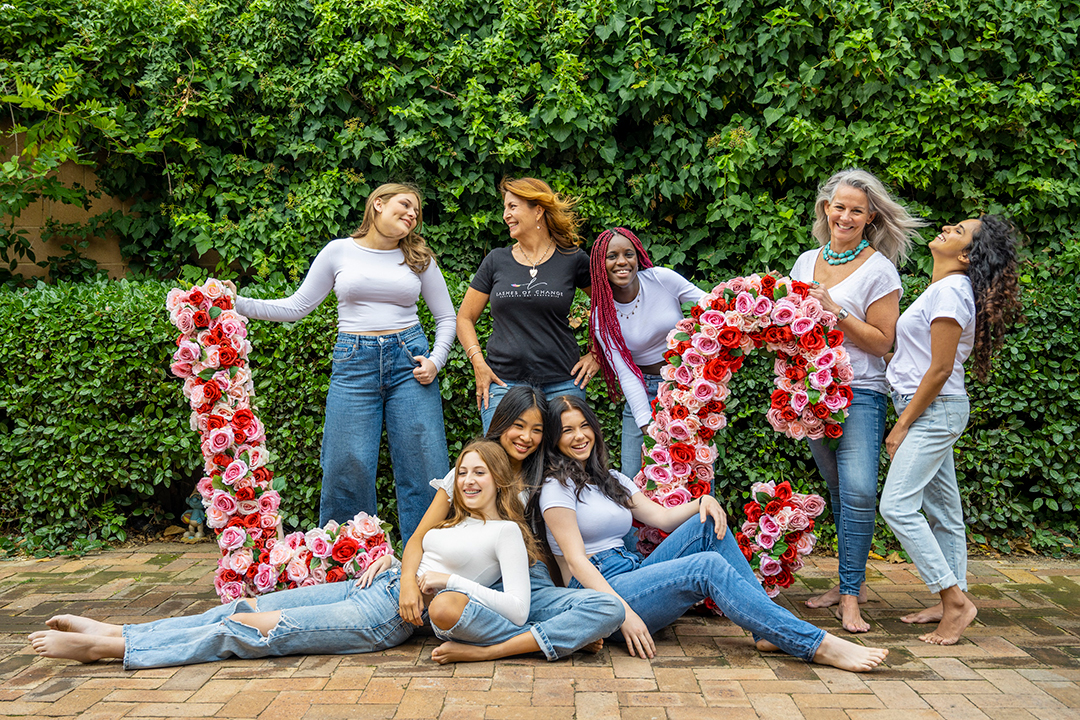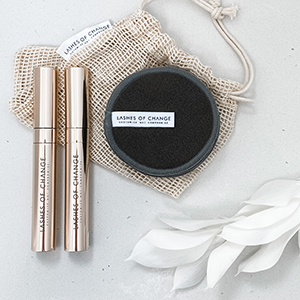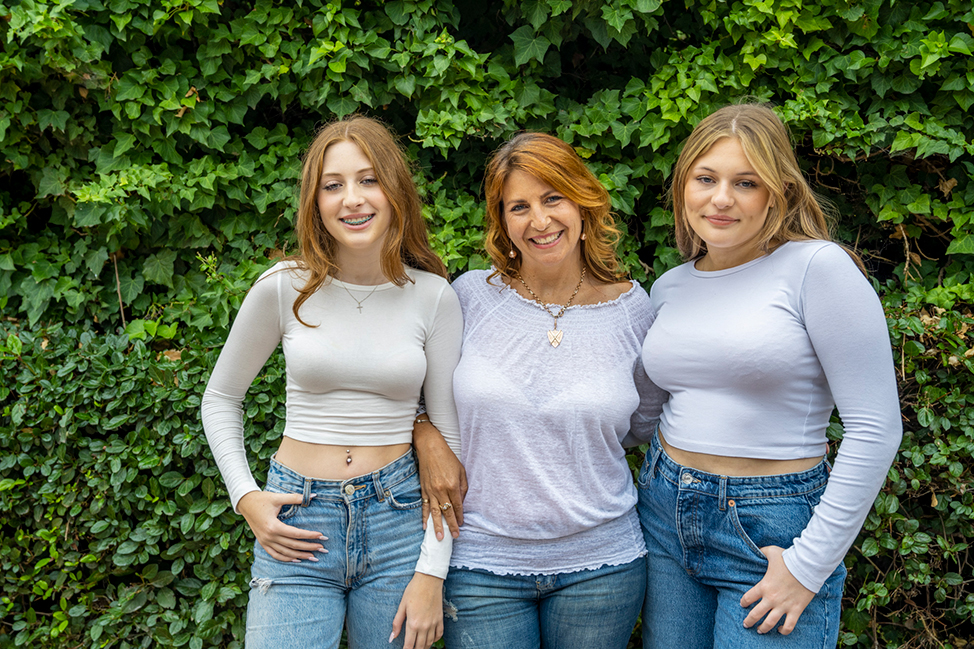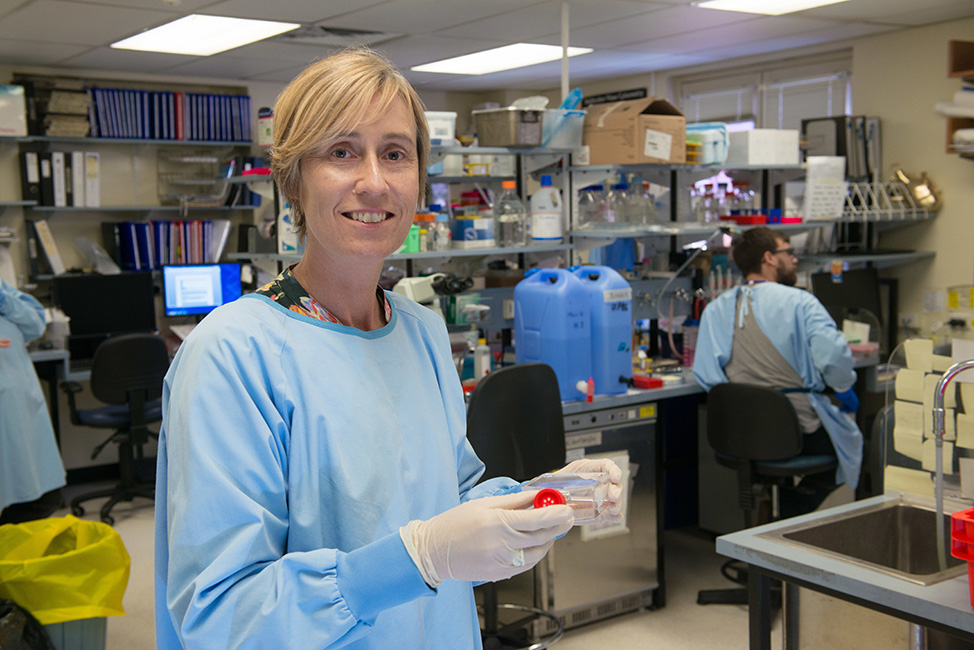31 January 2023
Breast cancer continues to be the most commonly diagnosed cancer in women but researchers, with the support of the wider community, are working to identify new opportunities to treat and better manage this deadly disease.

Tania Jolley
Co-Founder DNA Security Solutions
Founder Lashes of Change
Bachelor of Business, Marketing & Logistics
Prof Claudine Bonder
Head Vascular Biology & Cell Trafficking Laboratory
Centre for Cancer Biology
When businesswoman and entrepreneur Tania Jolley was diagnosed with a very aggressive form of breast cancer in 2017, she was fortunate to already have a close personal connection with Professor Claudine Bonder from the Centre for Cancer Biology (CCB). While not directly involved in her treatment, Claudine was able to help Tania navigate the, sometimes overwhelming, rollercoaster of diagnosis, treatment and recovery.
“While women are understandably eager to start treatment, clinicians will take the time required to ensure they make the most accurate diagnosis and suggest the most appropriate treatment,” says Prof Bonder. Understandably, at such a stressful time, women may struggle to appreciate why such things are taking so much time.
“Claudine helped settle me,” says Tania. “She guided me to ask the right questions so I could find the right oncologist and was able to advise me on some of the current research and the treatment options that might have been available to me. This meant I was going into my discussions armed with current knowledge. I was so incredibly grateful for this gift of knowledge and empowerment”.
Tania was treated with intensive radiotherapy and after 18 months began to return to some sense of normality but chooses to continue with some tablet treatment as there is a concern from her multi-disciplinary team that her form of cancer may return.
Having been through this experience, Tania was reinvigorated to pursue a long-held dream (and business opportunity) to create a customisable and more sustainable mascara to replace a discontinued favourite that had been her go-to for decades.
“We all expect to live to 80 or 90, but when you have a diagnosis with an end date, the really important priorities float to the top,” says Tania.

re-designed this staple cosmetics item and its packaging
from scratch, increasing the functionality and empowering
users to finally have a bespoke product.
And so, Lashes of Change was launched in July last year. Not only is the mascara vegan, clean beauty, cruelty free and non-clumping, it offers the first ever interchangeable brush heads, with a choice of formulas and colours and three stylish outer cases. Once the mascara is empty, the internal refill canister, made from 50% recycled PCR plastic, is simply replaced. “More than 90% of the packaging and product is reusable or used on your lashes” says Tania. “Once it’s at the end of its life, almost all of the materials can be recycled as opposed to ending up in landfill.”
In addition to her focus on sustainability, Tania remains committed to supporting research into finding a cure for breast cancer.
“Having received my diagnosis in my 40s, it’s likely the cancer could reoccur in my 70s,” says Tania. “Selfishly, I want a cure for me, but I definitely don’t want my two daughters to go through this experience either.”

To this end, 25 per cent of profits made from product sales will be donated by the Lashes of Love Foundation to the CCB where Prof Bonder heads up the Vascular Biology and Cell Trafficking Laboratory.
CCB is an alliance between the University of South Australia and SA Pathology and, as well as looking at melanoma and ovarian cancer, continues research into breast cancer, including triple negative breast cancer (TNBC).
TNBC, the most aggressive and difficult to treat subgroup of breast cancers, is more likely to spread to other parts of the body, a process known as metastasis.
“For breast cancer to grow and metastasise it gains access to the circulating blood supply for oxygen and nutrients as well as the circulating white blood cells to control cancer progression,” says Prof Bonder. “Tumours that have lots of blood vessels within them metastasise more quickly and have poor outcomes for patients, so targeting tumours with high vasculature is a priority.”

Cancer cells promote tumour vascularisation through two processes, (i) angiogenesis (the proliferation of endothelial cells (ECs) and expansion of existing vasculature), and (ii) vasculogenic mimicry (VM) wherein cancer cells themselves form vascular-like structures.
“TNBC, is a highly vascularised breast cancer and contains both angiogenesis and VM. Tumours are known to use VM for the delivery of oxygen and nutrients, but whether these VM structures circulate leukocytes to control tumour growth is completely unknown.”
With access to cutting edge technology and using molecular imaging techniques, the Bonder laboratory has new evidence to suggest that when cancer cells mimic vascular ECs, they actively “recruit” circulating specific white blood cells (leukocyte subsets such as monocytes) into the tumour mass to support its growth.
With the support of the Lashes of Love Foundation and others, future work will reveal whether VM structures can be targeted to prevent their contribution to tumour growth and thus generate new opportunities to treat and better manage breast cancer.
Support cancer research at UniSA here: donate.unisa.edu.au/donate-to-cancer-research
You can read more about Tania’s story and purchase her products online at Lashes of Change.

Join UniSA’s fight against cancer
When you donate to UniSA, 100% of your gift will have an impact - with no admin fees or hidden costs.




